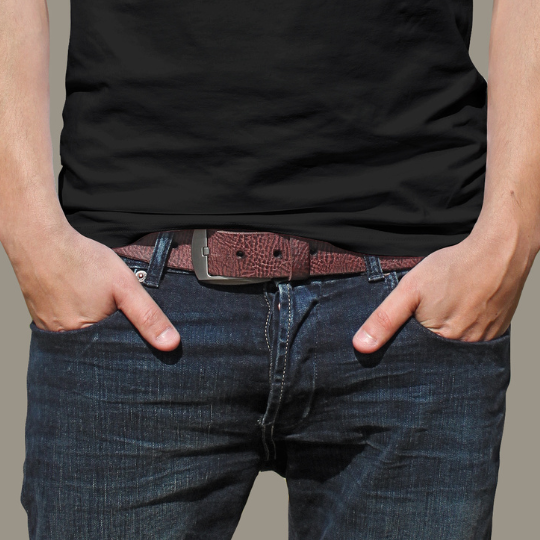Men’s Health Week, which spans June 12–16, encourages men and boys to take action and prioritize their health. In honor of this week, we would like to share Jake’s story.
About a year ago, 26-year-old Jake* was a grad student working in South America when he experienced severe urinary urgency and frequency. He was finally given antibiotics and told he had a diagnosis of prostatitis. His symptoms eventually did resolve.
When he returned to the states, he began to experience similar symptoms. This time, the antibiotics didn’t work. The symptoms worsened, and he had more abdominal pain.
Tests ruled out urinary tract infection, sexually transmitted diseases and acute prostatitis. He eventually had a cystoscopy and CAT scan, both of which were negative.
Jake never received any treatment for his symptoms.
He went on to finish graduate school and moved to Colorado. His symptoms continued, and he heard about N2 Physical Therapy through a co-worker.
First evaluation for pelvic pain
By the time Jake was evaluated here, his symptoms and complaints had evolved to include:
- Abdominal pain and tightness
- Urinary urgency (day and night)
- Constipation
- Pain with ejaculation
- Pain and discomfort with sitting (near tailbone and rectum)
- Fear of exercise because he thought it would make his symptoms worse
Evaluation findings
Posture
Due to years of sitting during undergrad and graduate school, Jake had adopted a slouched posture with forward head and shoulders and a slumped lower back.
Connective tissue
Jake had very sensitive and restricted mobility of the connective tissue—or fascia—in his lower back and hips, especially around his “sit bones” (also known as the ischial tuberosities).
Muscle tightness/trigger points
He was a shallow breather; the muscles of his abdominal wall were very taut and had restricted mobility. Trigger points were present in muscles around his hips, including the rotators and inner thigh.
Pelvic floor muscles
Jake didn’t realize he had a strong tendency to clench his pelvic floor muscles, especially when he was under a lot of stress. As a result, the pelvic muscles lacked coordination and relaxation.
Treatment and treatment plan
Men’s Health is so important, and men traditionally find it hard to take action, especially with something so personal. Jake came in for treatment weekly, for a duration of six weeks.
His treatment consisted of:
- Connective tissue mobilization: manual fascial work, focusing on areas around the hips and pelvis
- Trigger point release: manual release and trigger point dry needling
Home program: postural awareness exercises, breathing, pelvic floor relaxation exercises and gentle stretches. (After three visits Jake started running, one of his favorite activities.) - Education: Jake was instructed in dietary irritants for the bladder, urge suppression techniques, constipation management, and to get a standing station at work if possible.
Results
After six sessions, Jake’s bowel and bladder symptoms had resolved. He continued to experience abdominal tightness and discomfort and could correlate his symptoms with stress.
We saw him for another three visits spread out over four months. Jake was discharged after nine visits. He got a standing desk at work and even trained and completed a half marathon!
Learn from Jake
Jake’s story isn’t uncommon. When men go to their doctor about pelvic pain—especially with urinary symptoms—the most common diagnosis they receive is prostatitis.
There are different types, or categories, of prostatitis:
- Category I: acute bacterial prostatitis
- Category II: chronic bacterial prostatitis
- Category III: chronic prostatitis / chronic pelvic pain syndrome (CPPS)
- Category IV: asymptomatic prostatitis
Category I and II are due to a bacterial infection of the prostate, and account for about 8–10% of cases.1 They’re confirmed with a culture and treated with traditional antibiotics.
For Category IV, white blood cells are in the prostatic secretions or in prostate tissue, while the symptoms are minimal. This is an uncommon type of prostatitis in which the prostate may be inflamed but men do not have other symptoms typical of other forms of prostatitis.
Category III is the most common form, making up around 90% of the cases of prostatitis. This type of prostatitis is not a bacterial infection. Most of our patients who present with neuromyofascial causes of their pelvic pain fall in this category.
Males with CPPS may experience a variety of symptoms:
- Burning pain in the genitals (scrotum, shaft or crotch area)
- Bladder symptoms: urgency/frequency, hesitancy with urination, restricted urinary flow or pain with urination
- Bowel symptoms: constipation, difficulty emptying completely, pain with bowel movements
- Rectal or anal pain
- Sexual dysfunction: erectile dysfunction, pain with intercourse or ejaculation
- Other musculoskeletal complaints: hip, groin, tailbone, lower back or abdominal
Because the symptoms are so diverse, researchers have developed a categorization known as the UPOINT classification. By providing the various subgroups of symptoms, treatment can be more accurately and individually tailored.
Names have been changed to protect the identities of the subjects of the story.*
You can find out more about Men’s Health Month
References
- Nguyen CT and Shoskes DA, in Chronic Prostatitis / Chronic Pelvic Pain Syndrome, Humana Press, 2008. Shoskes, DA, ed. Schaeffer, A. Chronic Prostatitis and the Chronic Pelvic Pain Syndrome N Engl J Med 2006; 355:1690-1698 October 19, 2006 DOI: 10.1056/NEJMcp060423

